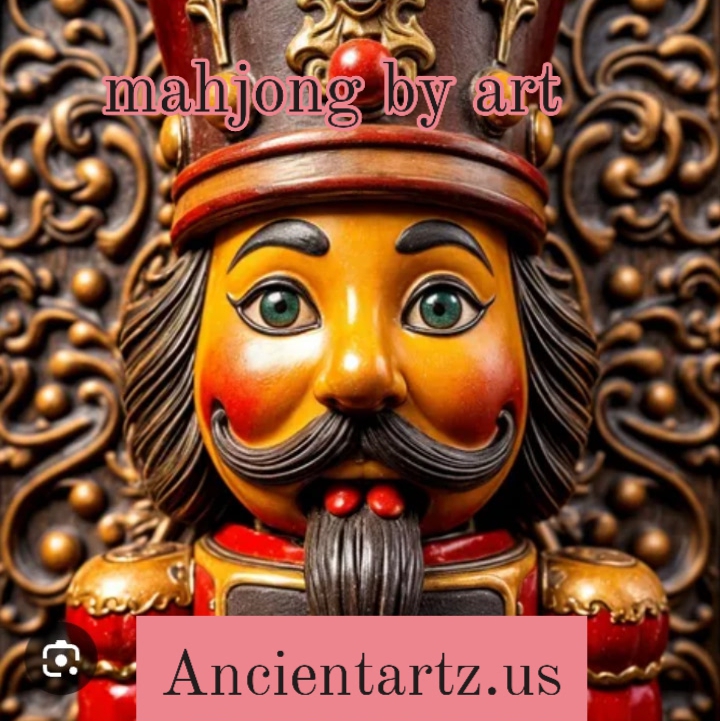Introduction
Mahjong is a game that has captivated millions for centuries, combining skill, strategy, and luck. Originating in China during the Qing Dynasty, it has evolved into a beloved pastime across the globe. Today, Mahjong isn’t just a game; it’s an art form. From the design of the tiles to the intricate layouts of the game table, the cultural significance of Mahjong has inspired artists, designers, and creators to incorporate the game’s rich heritage into their works.
In this article, we explore the intersection of Mahjong and art. From its cultural symbolism to its visual aesthetics, we will delve into how Mahjong is more than just a game – it is a medium for artistic expression. We will also examine how Mahjong has influenced various art forms, from graphic design to sculpture, and how it continues to inspire new generations of artists.
The Cultural Significance of Mahjong
Before delving into Mahjong’s artistic influence, it is essential to understand its cultural importance. Mahjong is deeply embedded in Chinese culture and history. The game symbolizes social interaction, tradition, and strategy. It’s played during family gatherings, festivals, and other important occasions, serving as both entertainment and a cultural ritual. Each tile in the game holds symbolic meaning, often tied to Chinese traditions, philosophies, and customs.
The four suits—bamboo, characters, circles, and the winds—represent elements such as nature, time, and direction. Other special tiles like the dragons, flowers, and seasons carry their own significance, reflecting a deep connection to the natural world and Chinese mythology. This symbolic richness provides an excellent foundation for artists to draw inspiration.
The Aesthetic Appeal of Mahjong
One of the key reasons Mahjong has transcended beyond a simple game is its visual appeal. The design of the Mahjong tiles is an art form in itself. Over the years, Mahjong sets have been created using various materials, including wood, ivory, bone, and plastic. Traditional sets feature hand-painted designs, often reflecting intricate patterns and symbols.
The aesthetic of Mahjong tiles varies depending on the region, era, and cultural influences. In ancient times, Mahjong sets were meticulously crafted, with hand-painted images of birds, flowers, and landscapes. Modern sets, however, have evolved to feature sleek, minimalist designs or bold graphic depictions. Despite the differences, each set of tiles carries a sense of artistry, whether it’s the fine detail of traditional designs or the modern stylization of contemporary sets.
Moreover, Mahjong tables themselves are often designed to complement the game. These tables can be simple or luxurious, reflecting the status of the players and the occasion. The beauty and craftsmanship involved in creating Mahjong sets and tables highlight the artistic value of this ancient game.
Mahjong as a Medium for Contemporary Art
In recent years, artists have begun to use Mahjong as a medium for contemporary art. Its iconic tiles and rich symbolism have inspired painters, sculptors, and designers to incorporate the game into their works. One notable example is the integration of Mahjong into installations and public art. These pieces often reflect the social aspects of the game, focusing on themes of community, chance, and tradition.
Modern artists also use Mahjong to explore ideas of culture, identity, and globalization. For example, a piece might feature Mahjong tiles as a commentary on the impact of Eastern traditions in Western societies. Other artists might use the game to address themes of strategy and chance, considering how these elements mirror life itself.
Mahjong Tile Design as an Art Form
The design of Mahjong tiles is often considered an art form in itself. Tile designers carefully craft each symbol to convey meaning while ensuring the tile is functional for gameplay. This balance of form and function is crucial in the design process. Tile artists use various techniques, from hand-carving to digital printing, to create visually appealing tiles that also serve a practical purpose.
Traditional Mahjong tile designs are intricate, often featuring hand-painted or hand-carved images of animals, plants, and Chinese symbols. These designs are not only beautiful but also carry symbolic significance. For example, the Bamboo suit often features bamboo stalks, which represent strength and resilience, while the Character suit includes Chinese characters that signify good fortune and prosperity.
In contemporary Mahjong sets, tile design has evolved to meet modern tastes. Many sets feature sleek, minimalist designs with bold colors and geometric shapes. These designs retain the essence of the traditional Mahjong tile but are reimagined for a modern audience. The fusion of traditional and contemporary styles is a testament to the enduring appeal of Mahjong as an art form.
The Role of Mahjong in Graphic Design
Mahjong’s influence extends beyond physical objects like tiles and tables. It has also had a significant impact on the field of graphic design. Designers often use Mahjong as inspiration for logos, posters, and digital artwork. The distinct imagery of Mahjong tiles, combined with their rich cultural meanings, makes them an ideal subject for graphic designers seeking to create visually striking and meaningful designs.
In graphic design, Mahjong can be used to convey messages related to luck, strategy, or even the complexities of life. For example, a graphic designer might create a logo featuring Mahjong tiles to represent a brand that emphasizes chance or strategy, or they might incorporate the tiles into a larger illustration to evoke a sense of cultural richness and heritage. The clean lines and geometric shapes of Mahjong tiles also make them a popular design choice for modern and minimalist artwork.
The Influence of Mahjong in Popular Culture
Mahjong’s influence extends beyond the realm of fine art and graphic design into popular culture. From films and TV shows to video games, Mahjong has been depicted in various forms of entertainment. In many cases, Mahjong serves as a symbol of intelligence, strategy, and social status. In some films, it is portrayed as a game of high stakes, where players rely on their skills and intuition to win.
The game’s association with luck and fate also makes it a popular theme in literature and art. Writers and artists often use Mahjong as a metaphor for life’s unpredictability, where the outcome is determined by both chance and skill. Mahjong’s cultural significance, along with its aesthetic appeal, makes it a fitting subject for storytelling and artistic expression in the modern world.
Mahjong as an Interactive Art Experience
In the digital age, Mahjong has evolved into an interactive art experience. Online platforms and mobile apps have made the game more accessible than ever, allowing players to engage with Mahjong in new ways. These digital adaptations often feature stunning graphics and animations, adding a modern twist to the traditional game. Some apps even incorporate elements of augmented reality (AR) or virtual reality (VR), offering an immersive Mahjong experience that blends art with technology.
This evolution of Mahjong as a digital experience has sparked new forms of creativity. Artists and developers are constantly exploring innovative ways to incorporate the game into virtual spaces, using it as a canvas for digital art, video games, and interactive installations. These advancements in digital technology have opened up new possibilities for Mahjong to continue evolving as an art form.
Conclusion
Mahjong is a game with a rich history, and its artistic influence continues to thrive in contemporary culture. From traditional tile design to modern graphic art, Mahjong’s visual appeal and symbolic depth have inspired artists across the globe. The fusion of Mahjong’s cultural heritage with artistic expression has led to the creation of unique, thought-provoking works of art that celebrate the game’s enduring legacy.
As we look to the future, it is clear that Mahjong will continue to inspire new generations of artists, designers, and creators. Whether through traditional craftsmanship, contemporary graphic design, or digital innovation, Mahjong will remain a powerful symbol of creativity and culture for years to come.
FAQs
1. What is the history of Mahjong?
Mahjong originated in China during the Qing Dynasty and was initially played by the elite. It spread across Asia and, eventually, the world. Over time, different variations of the game emerged, reflecting regional and cultural differences.
2. How is Mahjong related to art?
Mahjong is closely tied to art through the design of its tiles, which feature intricate symbols and images with cultural and symbolic significance. Artists also use Mahjong as inspiration in their works, incorporating it into paintings, sculptures, and digital designs.
3. What materials are used to create Mahjong tiles?
Traditional Mahjong tiles were made from materials like wood, ivory, and bone. Modern sets are often made from plastic or resin, though some high-end sets still use premium materials like jade or porcelain.
4. Can Mahjong be considered a form of interactive art?
Yes, with the rise of digital Mahjong games and apps, Mahjong has become an interactive art experience. These digital versions often feature beautiful graphics and animations, offering players a visually engaging way to enjoy the game.
5. What role does Mahjong play in Chinese culture?
Mahjong is a game that symbolizes social interaction, family bonding, and strategy. It is often played during important cultural events and festivals and carries deep cultural significance through its symbolic tiles.
6. How has Mahjong influenced graphic design?
Mahjong’s distinct tiles and rich symbolism have inspired graphic designers to incorporate the game into logos, illustrations, and other design projects. Its clean lines and geometric shapes make it a popular choice in modern graphic design.
7. What is the future of Mahjong in art?
Mahjong will continue to inspire artists and creators in the future. With the advent of digital technologies like virtual reality, Mahjong has become an evolving canvas for artists to explore new forms of creativity, ensuring its legacy in the art world remains strong.


